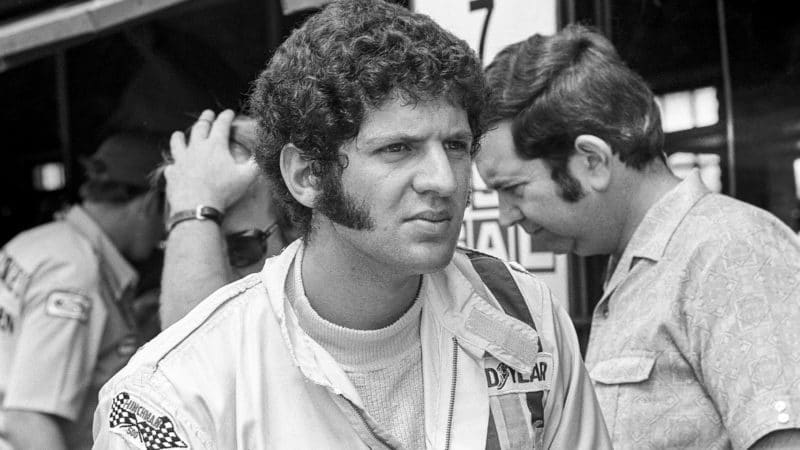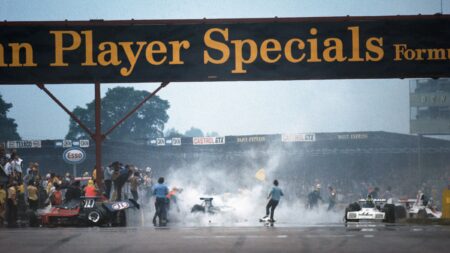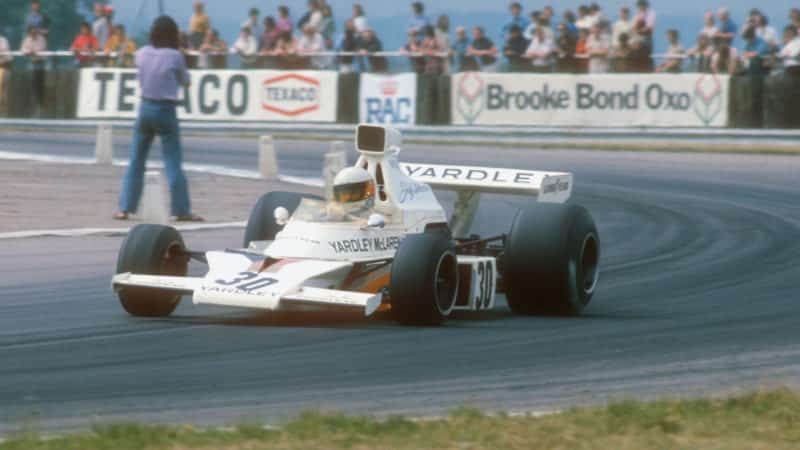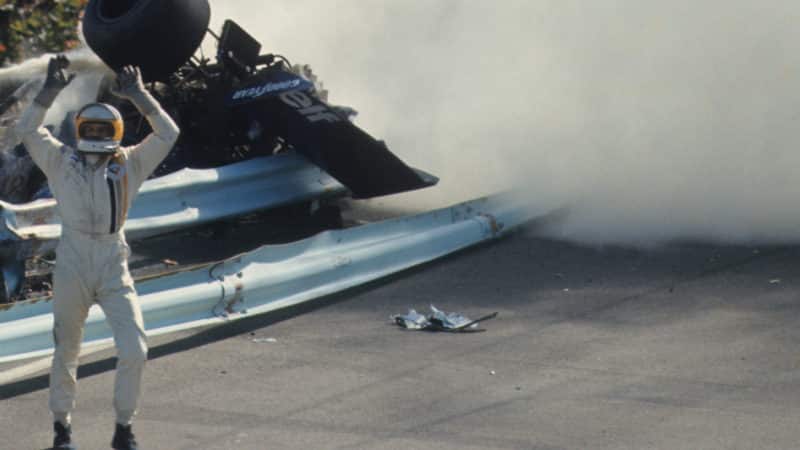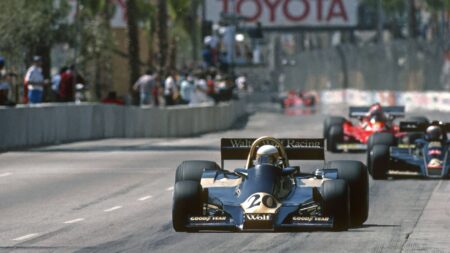He’d arrived in England in March 1971, whereupon Jody bought Emerson Fittipaldi’s Merlyn Formula Ford to make his way. A little over 18 months later, he was lining up to make his F1 debut in a third McLaren M19 at Watkins Glen – an astonishing rise. It was quite a debut too. Scheckter qualified on the third row, ahead of new champion Fittipaldi, made a good start to run third and was still fourth by half-distance behind Jackie Stewart, François Cevert and team-mate Denny Hulme. He was unlucky to be caught out by a shower of rain, so only finished ninth – but with the race’s second-fastest lap he’d still made his point.
“I’m not even sure I’d run in an F1 car before I got to the Glen,” says Jody. “It was quite nice because nobody knew me and I could just walk around. I was always just concentrating on how I could go faster, how I could get information from my team-mates and that sort of stuff. There was some water at the end of the straight and I spun, but the team were not all that upset about it. I suppose they were quite impressed with the lap times I was doing.”
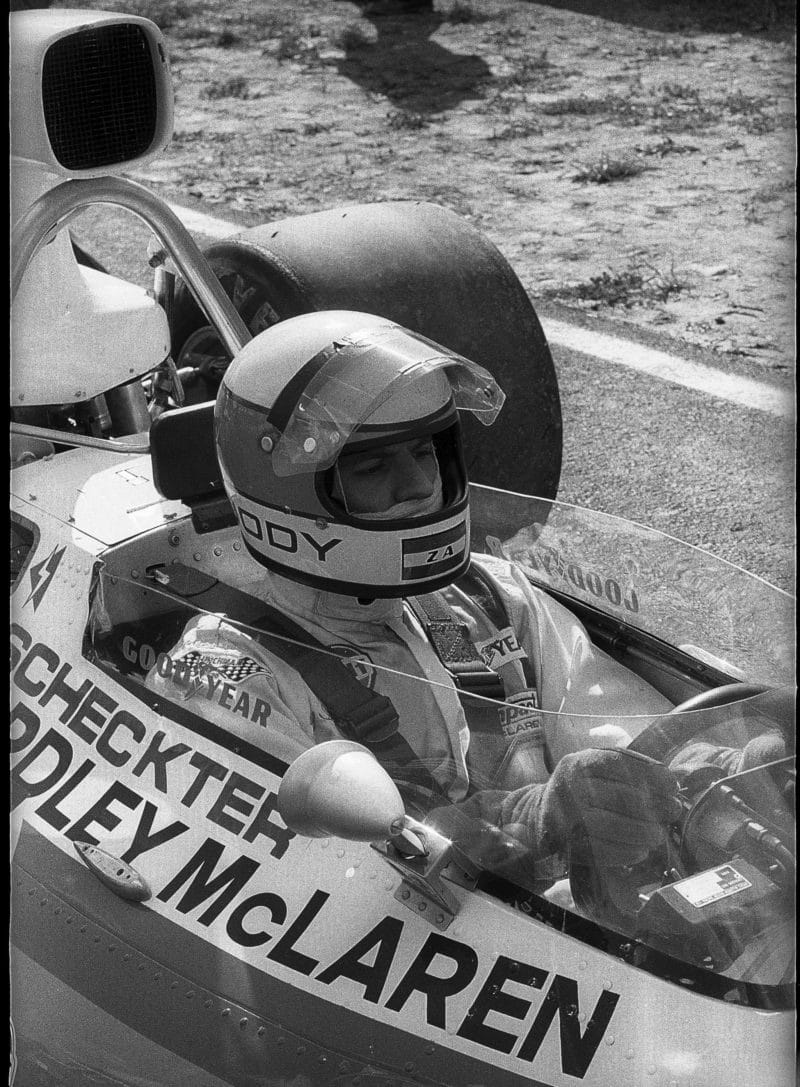
Scheckter on his F1 debut at Watkins Glen, 1972
Ullstein bild via Getty images
Scheckter had been racing in Formula 2 for McLaren, but in 1973 the team chose not to commit to the junior category. Jody was left high and dry, given that Hulme and Peter Revson had the full-time deals in F1, and was offered the crumbs of occasional third-car drives – an option unavailable to hopefuls today. But every time he turned out for the Yardley-sponsored team, Jody made an impact – more often than not in a positive way.
His home race at Kyalami was an early chance, thanks to the carrot for McLaren of decent start money to run a local lad. This time Scheckter qualified the M19 on the front row, led briefly and ran second to Stewart for 27 laps. Running fourth in the late stages, an engine failure robbed him of a points-scoring finish.
“I didn’t really know anybody,” says Jody. “The only person I knew was Jackie Stewart who was introduced to me in South Africa. I just remember in an F1 car at a corner at the end of a long straight it just gripped more and more, I couldn’t believe how it didn’t slide. Those were the impressions on my first laps.”
As a third driver, Scheckter recalls feeling like the runt of the litter. “We had Goodyear tyres and at that time they were always experimenting because there were different tyre manufacturers. So Denny would get a tyre that was quicker, then he would send the tyre that he had to Revson – and I got Revson’s! This was how the development went. I think I went quicker than Revson with the slower tyres sometimes.”
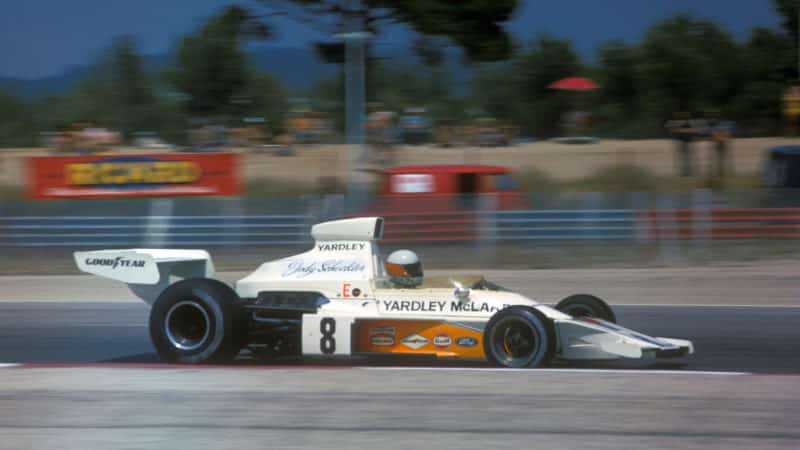
On course to win at Ricard before unfortunate block
Grand Prix Photo
Did his team-mates give him the time of day? Jody chuckles. “Peter I didn’t spend a lot of time with, but I was quite friendly with Denny. He didn’t tell me everything. The next race was Paul Ricard and he was going down to the lower gear out of the hairpin and I wasn’t, and he didn’t tell me. But you know, I don’t blame him.”
Ricard, a long four months after Kyalami, reignited the stuttering F1 career momentum. This time he was in for Revson, who was cup tied by a USAC race in Pocono, which meant Jody had the new wedge-shaped McLaren M23 to explore. He stuck it in the middle of the front row, between Stewart and Fittipaldi, then sensationally led from the start until with 12 laps to go the Lotus driver made a move while they were lapping Jean-Pierre Beltoise’s BRM. Young Jody shut the door and they collided.
